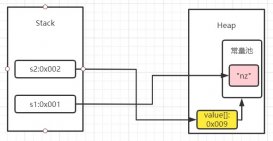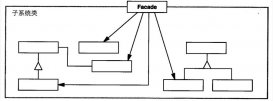本文实例讲述了Java RSA加密解密实现方法。分享给大家供大家参考,具体如下:
该工具类中用到了BASE64,需要借助第三方类库:javabase64-1.3.1.jar
javabase64-1.3.1.jar 本站下载地址。
注意:
RSA加密明文最大长度117字节,解密要求密文最大长度为128字节,所以在加密和解密的过程中需要分块进行。
RSA加密对明文的长度是有限制的,如果加密数据过大会抛出如下异常:
|
1
2
3
4
|
Exception in thread "main" javax.crypto.IllegalBlockSizeException: Data must not be longer than 117 bytes at com.sun.crypto.provider.RSACipher.a(DashoA13*..) at com.sun.crypto.provider.RSACipher.engineDoFinal(DashoA13*..) at javax.crypto.Cipher.doFinal(DashoA13*..) |
RSAUtils.java
|
1
2
3
4
5
6
7
8
9
10
11
12
13
14
15
16
17
18
19
20
21
22
23
24
25
26
27
28
29
30
31
32
33
34
35
36
37
38
39
40
41
42
43
44
45
46
47
48
49
50
51
52
53
54
55
56
57
58
59
60
61
62
63
64
65
66
67
68
69
70
71
72
73
74
75
76
77
78
79
80
81
82
83
84
85
86
87
88
89
90
91
92
93
94
95
96
97
98
99
100
101
102
103
104
105
106
107
108
109
110
111
112
113
114
115
116
117
118
119
120
121
122
123
124
125
126
127
128
129
130
131
132
133
134
135
136
137
138
139
140
141
142
143
144
145
146
147
148
149
150
151
152
153
154
155
156
157
158
159
160
161
162
163
164
165
166
167
168
169
170
171
172
173
174
175
176
177
178
179
180
181
182
183
184
185
186
187
188
189
190
191
192
193
194
195
196
197
198
199
200
201
202
203
204
205
206
207
208
209
210
211
212
213
214
215
216
217
218
219
220
221
222
223
224
225
226
227
228
229
230
231
232
233
234
235
236
237
238
239
240
241
242
243
244
245
246
247
248
249
250
251
252
253
254
255
256
257
258
259
260
261
262
263
264
265
266
267
268
269
270
271
272
273
274
275
276
277
278
279
280
281
282
283
284
285
286
287
288
289
290
291
292
293
294
295
296
297
298
299
300
301
302
303
304
|
package security;import java.io.ByteArrayOutputStream;import java.security.Key;import java.security.KeyFactory;import java.security.KeyPair;import java.security.KeyPairGenerator;import java.security.PrivateKey;import java.security.PublicKey;import java.security.Signature;import java.security.interfaces.RSAPrivateKey;import java.security.interfaces.RSAPublicKey;import java.security.spec.PKCS8EncodedKeySpec;import java.security.spec.X509EncodedKeySpec;import java.util.HashMap;import java.util.Map;import javax.crypto.Cipher;/** *//** * <p> * RSA公钥/私钥/签名工具包 * </p> * <p> * 罗纳德·李维斯特(Ron [R]ivest)、阿迪·萨莫尔(Adi [S]hamir)和伦纳德·阿德曼(Leonard [A]dleman) * </p> * <p> * 字符串格式的密钥在未在特殊说明情况下都为BASE64编码格式<br/> * 由于非对称加密速度极其缓慢,一般文件不使用它来加密而是使用对称加密,<br/> * 非对称加密算法可以用来对对称加密的密钥加密,这样保证密钥的安全也就保证了数据的安全 * </p> * * @author IceWee * @date 2012-4-26 * @version 1.0 */public class RSAUtils { /** *//** * 加密算法RSA */ public static final String KEY_ALGORITHM = "RSA"; /** *//** * 签名算法 */ public static final String SIGNATURE_ALGORITHM = "MD5withRSA"; /** *//** * 获取公钥的key */ private static final String PUBLIC_KEY = "RSAPublicKey"; /** *//** * 获取私钥的key */ private static final String PRIVATE_KEY = "RSAPrivateKey"; /** *//** * RSA最大加密明文大小 */ private static final int MAX_ENCRYPT_BLOCK = 117; /** *//** * RSA最大解密密文大小 */ private static final int MAX_DECRYPT_BLOCK = 128; /** *//** * <p> * 生成密钥对(公钥和私钥) * </p> * * @return * @throws Exception */ public static Map<String, Object> genKeyPair() throws Exception { KeyPairGenerator keyPairGen = KeyPairGenerator.getInstance(KEY_ALGORITHM); keyPairGen.initialize(1024); KeyPair keyPair = keyPairGen.generateKeyPair(); RSAPublicKey publicKey = (RSAPublicKey) keyPair.getPublic(); RSAPrivateKey privateKey = (RSAPrivateKey) keyPair.getPrivate(); Map<String, Object> keyMap = new HashMap<String, Object>(2); keyMap.put(PUBLIC_KEY, publicKey); keyMap.put(PRIVATE_KEY, privateKey); return keyMap; } /** *//** * <p> * 用私钥对信息生成数字签名 * </p> * * @param data 已加密数据 * @param privateKey 私钥(BASE64编码) * * @return * @throws Exception */ public static String sign(byte[] data, String privateKey) throws Exception { byte[] keyBytes = Base64Utils.decode(privateKey); PKCS8EncodedKeySpec pkcs8KeySpec = new PKCS8EncodedKeySpec(keyBytes); KeyFactory keyFactory = KeyFactory.getInstance(KEY_ALGORITHM); PrivateKey privateK = keyFactory.generatePrivate(pkcs8KeySpec); Signature signature = Signature.getInstance(SIGNATURE_ALGORITHM); signature.initSign(privateK); signature.update(data); return Base64Utils.encode(signature.sign()); } /** *//** * <p> * 校验数字签名 * </p> * * @param data 已加密数据 * @param publicKey 公钥(BASE64编码) * @param sign 数字签名 * * @return * @throws Exception * */ public static boolean verify(byte[] data, String publicKey, String sign) throws Exception { byte[] keyBytes = Base64Utils.decode(publicKey); X509EncodedKeySpec keySpec = new X509EncodedKeySpec(keyBytes); KeyFactory keyFactory = KeyFactory.getInstance(KEY_ALGORITHM); PublicKey publicK = keyFactory.generatePublic(keySpec); Signature signature = Signature.getInstance(SIGNATURE_ALGORITHM); signature.initVerify(publicK); signature.update(data); return signature.verify(Base64Utils.decode(sign)); } /** *//** * <P> * 私钥解密 * </p> * * @param encryptedData 已加密数据 * @param privateKey 私钥(BASE64编码) * @return * @throws Exception */ public static byte[] decryptByPrivateKey(byte[] encryptedData, String privateKey) throws Exception { byte[] keyBytes = Base64Utils.decode(privateKey); PKCS8EncodedKeySpec pkcs8KeySpec = new PKCS8EncodedKeySpec(keyBytes); KeyFactory keyFactory = KeyFactory.getInstance(KEY_ALGORITHM); Key privateK = keyFactory.generatePrivate(pkcs8KeySpec); Cipher cipher = Cipher.getInstance(keyFactory.getAlgorithm()); cipher.init(Cipher.DECRYPT_MODE, privateK); int inputLen = encryptedData.length; ByteArrayOutputStream out = new ByteArrayOutputStream(); int offSet = 0; byte[] cache; int i = 0; // 对数据分段解密 while (inputLen - offSet > 0) { if (inputLen - offSet > MAX_DECRYPT_BLOCK) { cache = cipher.doFinal(encryptedData, offSet, MAX_DECRYPT_BLOCK); } else { cache = cipher.doFinal(encryptedData, offSet, inputLen - offSet); } out.write(cache, 0, cache.length); i++; offSet = i * MAX_DECRYPT_BLOCK; } byte[] decryptedData = out.toByteArray(); out.close(); return decryptedData; } /** *//** * <p> * 公钥解密 * </p> * * @param encryptedData 已加密数据 * @param publicKey 公钥(BASE64编码) * @return * @throws Exception */ public static byte[] decryptByPublicKey(byte[] encryptedData, String publicKey) throws Exception { byte[] keyBytes = Base64Utils.decode(publicKey); X509EncodedKeySpec x509KeySpec = new X509EncodedKeySpec(keyBytes); KeyFactory keyFactory = KeyFactory.getInstance(KEY_ALGORITHM); Key publicK = keyFactory.generatePublic(x509KeySpec); Cipher cipher = Cipher.getInstance(keyFactory.getAlgorithm()); cipher.init(Cipher.DECRYPT_MODE, publicK); int inputLen = encryptedData.length; ByteArrayOutputStream out = new ByteArrayOutputStream(); int offSet = 0; byte[] cache; int i = 0; // 对数据分段解密 while (inputLen - offSet > 0) { if (inputLen - offSet > MAX_DECRYPT_BLOCK) { cache = cipher.doFinal(encryptedData, offSet, MAX_DECRYPT_BLOCK); } else { cache = cipher.doFinal(encryptedData, offSet, inputLen - offSet); } out.write(cache, 0, cache.length); i++; offSet = i * MAX_DECRYPT_BLOCK; } byte[] decryptedData = out.toByteArray(); out.close(); return decryptedData; } /** *//** * <p> * 公钥加密 * </p> * * @param data 源数据 * @param publicKey 公钥(BASE64编码) * @return * @throws Exception */ public static byte[] encryptByPublicKey(byte[] data, String publicKey) throws Exception { byte[] keyBytes = Base64Utils.decode(publicKey); X509EncodedKeySpec x509KeySpec = new X509EncodedKeySpec(keyBytes); KeyFactory keyFactory = KeyFactory.getInstance(KEY_ALGORITHM); Key publicK = keyFactory.generatePublic(x509KeySpec); // 对数据加密 Cipher cipher = Cipher.getInstance(keyFactory.getAlgorithm()); cipher.init(Cipher.ENCRYPT_MODE, publicK); int inputLen = data.length; ByteArrayOutputStream out = new ByteArrayOutputStream(); int offSet = 0; byte[] cache; int i = 0; // 对数据分段加密 while (inputLen - offSet > 0) { if (inputLen - offSet > MAX_ENCRYPT_BLOCK) { cache = cipher.doFinal(data, offSet, MAX_ENCRYPT_BLOCK); } else { cache = cipher.doFinal(data, offSet, inputLen - offSet); } out.write(cache, 0, cache.length); i++; offSet = i * MAX_ENCRYPT_BLOCK; } byte[] encryptedData = out.toByteArray(); out.close(); return encryptedData; } /** *//** * <p> * 私钥加密 * </p> * * @param data 源数据 * @param privateKey 私钥(BASE64编码) * @return * @throws Exception */ public static byte[] encryptByPrivateKey(byte[] data, String privateKey) throws Exception { byte[] keyBytes = Base64Utils.decode(privateKey); PKCS8EncodedKeySpec pkcs8KeySpec = new PKCS8EncodedKeySpec(keyBytes); KeyFactory keyFactory = KeyFactory.getInstance(KEY_ALGORITHM); Key privateK = keyFactory.generatePrivate(pkcs8KeySpec); Cipher cipher = Cipher.getInstance(keyFactory.getAlgorithm()); cipher.init(Cipher.ENCRYPT_MODE, privateK); int inputLen = data.length; ByteArrayOutputStream out = new ByteArrayOutputStream(); int offSet = 0; byte[] cache; int i = 0; // 对数据分段加密 while (inputLen - offSet > 0) { if (inputLen - offSet > MAX_ENCRYPT_BLOCK) { cache = cipher.doFinal(data, offSet, MAX_ENCRYPT_BLOCK); } else { cache = cipher.doFinal(data, offSet, inputLen - offSet); } out.write(cache, 0, cache.length); i++; offSet = i * MAX_ENCRYPT_BLOCK; } byte[] encryptedData = out.toByteArray(); out.close(); return encryptedData; } /** *//** * <p> * 获取私钥 * </p> * * @param keyMap 密钥对 * @return * @throws Exception */ public static String getPrivateKey(Map<String, Object> keyMap) throws Exception { Key key = (Key) keyMap.get(PRIVATE_KEY); return Base64Utils.encode(key.getEncoded()); } /** *//** * <p> * 获取公钥 * </p> * * @param keyMap 密钥对 * @return * @throws Exception */ public static String getPublicKey(Map<String, Object> keyMap) throws Exception { Key key = (Key) keyMap.get(PUBLIC_KEY); return Base64Utils.encode(key.getEncoded()); }} |
Base64Utils.java
|
1
2
3
4
5
6
7
8
9
10
11
12
13
14
15
16
17
18
19
20
21
22
23
24
25
26
27
28
29
30
31
32
33
34
35
36
37
38
39
40
41
42
43
44
45
46
47
48
49
50
51
52
53
54
55
56
57
58
59
60
61
62
63
64
65
66
67
68
69
70
71
72
73
74
75
76
77
78
79
80
81
82
83
84
85
86
87
88
89
90
91
92
93
94
95
96
97
98
99
100
101
102
103
104
105
106
107
108
109
110
111
112
113
114
115
116
117
118
119
120
121
122
123
124
125
126
127
128
129
130
131
132
|
package security;import java.io.ByteArrayInputStream;import java.io.ByteArrayOutputStream;import java.io.File;import java.io.FileInputStream;import java.io.FileOutputStream;import java.io.InputStream;import java.io.OutputStream;import it.sauronsoftware.base64.Base64;/** *//** * <p> * BASE64编码解码工具包 * </p> * <p> * 依赖javabase64-1.3.1.jar * </p> * * @author IceWee * @date 2012-5-19 * @version 1.0 */public class Base64Utils { /** *//** * 文件读取缓冲区大小 */ private static final int CACHE_SIZE = 1024; /** *//** * <p> * BASE64字符串解码为二进制数据 * </p> * * @param base64 * @return * @throws Exception */ public static byte[] decode(String base64) throws Exception { return Base64.decode(base64.getBytes()); } /** *//** * <p> * 二进制数据编码为BASE64字符串 * </p> * * @param bytes * @return * @throws Exception */ public static String encode(byte[] bytes) throws Exception { return new String(Base64.encode(bytes)); } /** *//** * <p> * 将文件编码为BASE64字符串 * </p> * <p> * 大文件慎用,可能会导致内存溢出 * </p> * * @param filePath 文件绝对路径 * @return * @throws Exception */ public static String encodeFile(String filePath) throws Exception { byte[] bytes = fileToByte(filePath); return encode(bytes); } /** *//** * <p> * BASE64字符串转回文件 * </p> * * @param filePath 文件绝对路径 * @param base64 编码字符串 * @throws Exception */ public static void decodeToFile(String filePath, String base64) throws Exception { byte[] bytes = decode(base64); byteArrayToFile(bytes, filePath); } /** *//** * <p> * 文件转换为二进制数组 * </p> * * @param filePath 文件路径 * @return * @throws Exception */ public static byte[] fileToByte(String filePath) throws Exception { byte[] data = new byte[0]; File file = new File(filePath); if (file.exists()) { FileInputStream in = new FileInputStream(file); ByteArrayOutputStream out = new ByteArrayOutputStream(2048); byte[] cache = new byte[CACHE_SIZE]; int nRead = 0; while ((nRead = in.read(cache)) != -1) { out.write(cache, 0, nRead); out.flush(); } out.close(); in.close(); data = out.toByteArray(); } return data; } /** *//** * <p> * 二进制数据写文件 * </p> * * @param bytes 二进制数据 * @param filePath 文件生成目录 */ public static void byteArrayToFile(byte[] bytes, String filePath) throws Exception { InputStream in = new ByteArrayInputStream(bytes); File destFile = new File(filePath); if (!destFile.getParentFile().exists()) { destFile.getParentFile().mkdirs(); } destFile.createNewFile(); OutputStream out = new FileOutputStream(destFile); byte[] cache = new byte[CACHE_SIZE]; int nRead = 0; while ((nRead = in.read(cache)) != -1) { out.write(cache, 0, nRead); out.flush(); } out.close(); in.close(); }} |
RSATester.java
|
1
2
3
4
5
6
7
8
9
10
11
12
13
14
15
16
17
18
19
20
21
22
23
24
25
26
27
28
29
30
31
32
33
34
35
36
37
38
39
40
41
42
43
44
45
46
47
48
|
package security;import java.util.Map;public class RSATester { static String publicKey; static String privateKey; static { try { Map<String, Object> keyMap = RSAUtils.genKeyPair(); publicKey = RSAUtils.getPublicKey(keyMap); privateKey = RSAUtils.getPrivateKey(keyMap); System.err.println("公钥: \n\r" + publicKey); System.err.println("私钥: \n\r" + privateKey); } catch (Exception e) { e.printStackTrace(); } } public static void main(String[] args) throws Exception { test(); testSign(); } static void test() throws Exception { System.err.println("公钥加密——私钥解密"); String source = "这是一行没有任何意义的文字,你看完了等于没看,不是吗?"; System.out.println("\r加密前文字:\r\n" + source); byte[] data = source.getBytes(); byte[] encodedData = RSAUtils.encryptByPublicKey(data, publicKey); System.out.println("加密后文字:\r\n" + new String(encodedData)); byte[] decodedData = RSAUtils.decryptByPrivateKey(encodedData, privateKey); String target = new String(decodedData); System.out.println("解密后文字: \r\n" + target); } static void testSign() throws Exception { System.err.println("私钥加密——公钥解密"); String source = "这是一行测试RSA数字签名的无意义文字"; System.out.println("原文字:\r\n" + source); byte[] data = source.getBytes(); byte[] encodedData = RSAUtils.encryptByPrivateKey(data, privateKey); System.out.println("加密后:\r\n" + new String(encodedData)); byte[] decodedData = RSAUtils.decryptByPublicKey(encodedData, publicKey); String target = new String(decodedData); System.out.println("解密后: \r\n" + target); System.err.println("私钥签名——公钥验证签名"); String sign = RSAUtils.sign(encodedData, privateKey); System.err.println("签名:\r" + sign); boolean status = RSAUtils.verify(encodedData, publicKey, sign); System.err.println("验证结果:\r" + status); }} |
希望本文所述对大家java程序设计有所帮助。
原文链接:http://blog.csdn.net/centralperk/article/details/8538697















